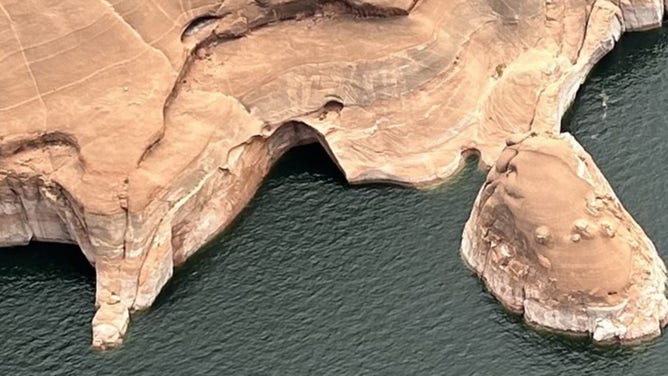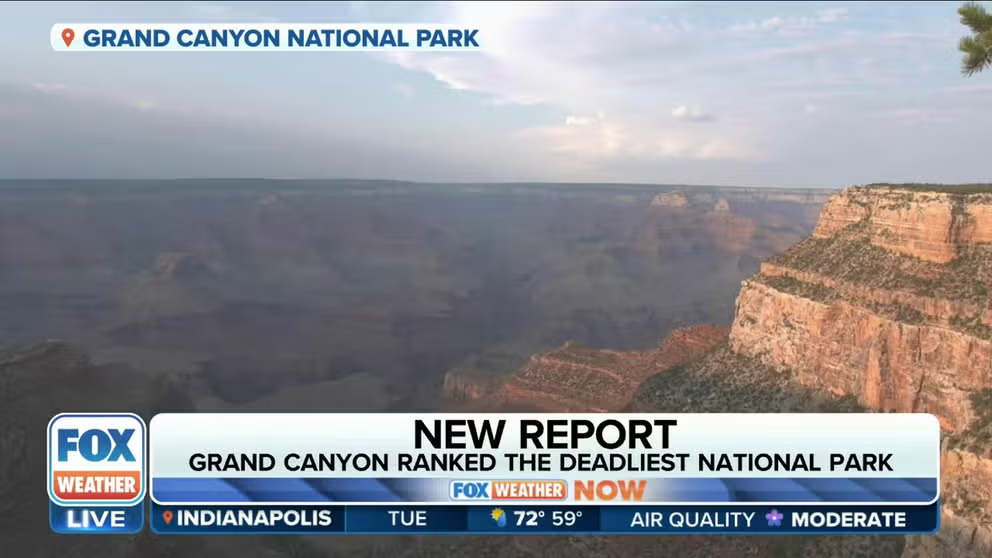Ancient ‘Double Arch’ formation collapses in Glen Canyon National Recreation Area
Glen Canyon National Recreation Area is located in northern Arizona and southern Utah, along the Colorado River. The federal site encompasses over 1.2 million acres and sees more than 3 million visitors a year.
Grand Canyon ranked deadliest national park
The Grand Canyon has been ranked the deadliest national park. It has the most missing person reports, deaths and even suicides from 2018 through the first two months of this year. FOX Weather's Max Gorden reports.
A popular rock formation in the Glen Canyon National Recreation Area collapsed on Thursday.
The National Park Service said that the "Double Arch," located along Lake Powell, was a visitor favorite and was occasionally known as the "Toilet Bowl," "Crescent Pool" and "Hole in the Roof."
NPS noted that the arch was formed from 190-million-year-old Navajo sandstone that originated during the late Triassic to early Jurassic periods.
The feature was subject to natural erosion from weather, wind and rain, but diminishing water levels could have played a role in the collapse.
"This event serves as a reminder of our responsibility and need to protect the mineral resources surrounding Lake Powell," Michelle Kerns, Glen Canyon National Recreation Area Superintendent, said in a statement. "These features have a lifespan that can be influenced or damaged by manmade interventions."

Arch collapse in Rock Creek Bay in Glen Canyon National Recreation Area
(National Park Service / FOX Weather)
THE HOTTEST PLACE ON EARTH JUST SET ITS HOTTEST MONTH ON RECORD
Staff gave no indications that other similar formations could be in immediate jeopardy at the over 1.2-million-acre site.
The area is home to Lake Powell, the second-largest human-made reservoir in the country, and a result of the famed Glen Canyon Dam.
The dam provides hydroelectric power and drinking water for millions in the Southwest, but a megadrought and population boom have resulted in decreasing resources.
Reduced water levels in recent years have exposed remnants of boats and even human remains that have disappeared over the decades.
While NPS staff said they do not know definitively if water levels were to blame, they are continuing to investigate.
"While we don’t know what caused this collapse, we will continue to maintain our resource protection efforts on Lake Powell for future generations to enjoy," Kerns stated.
TEXAS HIKER FOUND DEAD AT MOST DANGEROUS NATIONAL PARK IN AMERICA
Over 3 million people visit the site each year, which is home to thousands of archaeological marvels.
The area offers opportunities for boating, fishing, swimming, hiking and even camping, with summer temperatures often reaching the triple digits.
An active monsoon pattern can also lead to extreme weather during the summer and early fall, including flooding, gusty winds and dangerous lightning.
No one was injured in the collapse.


